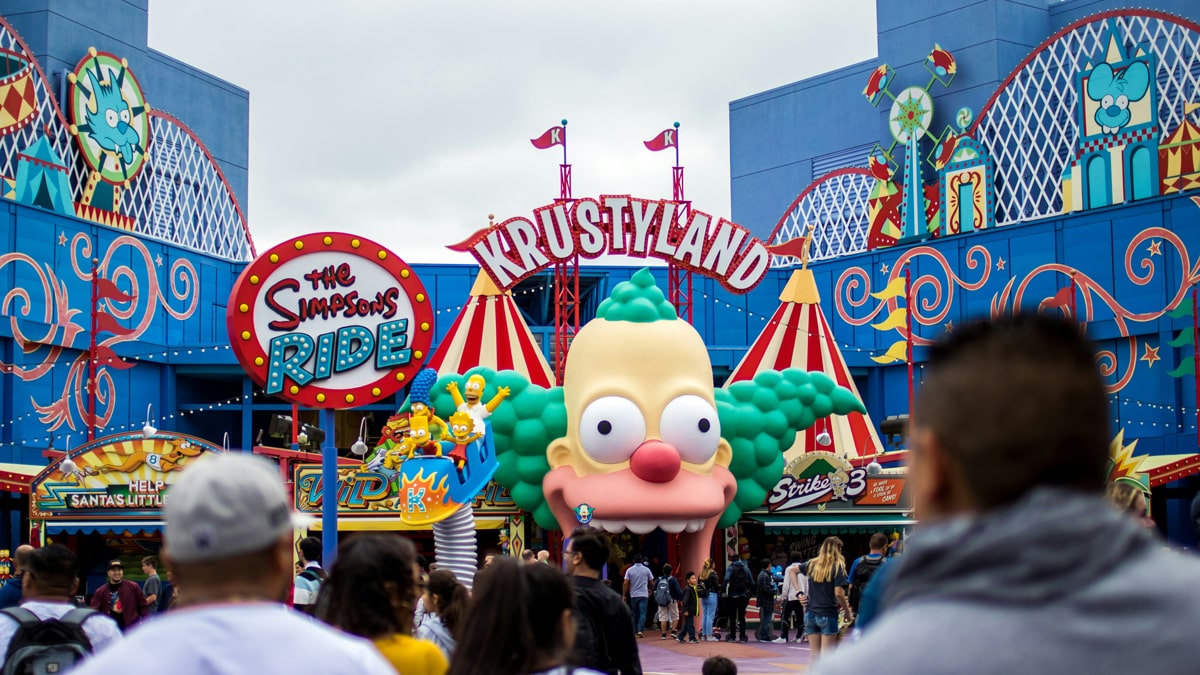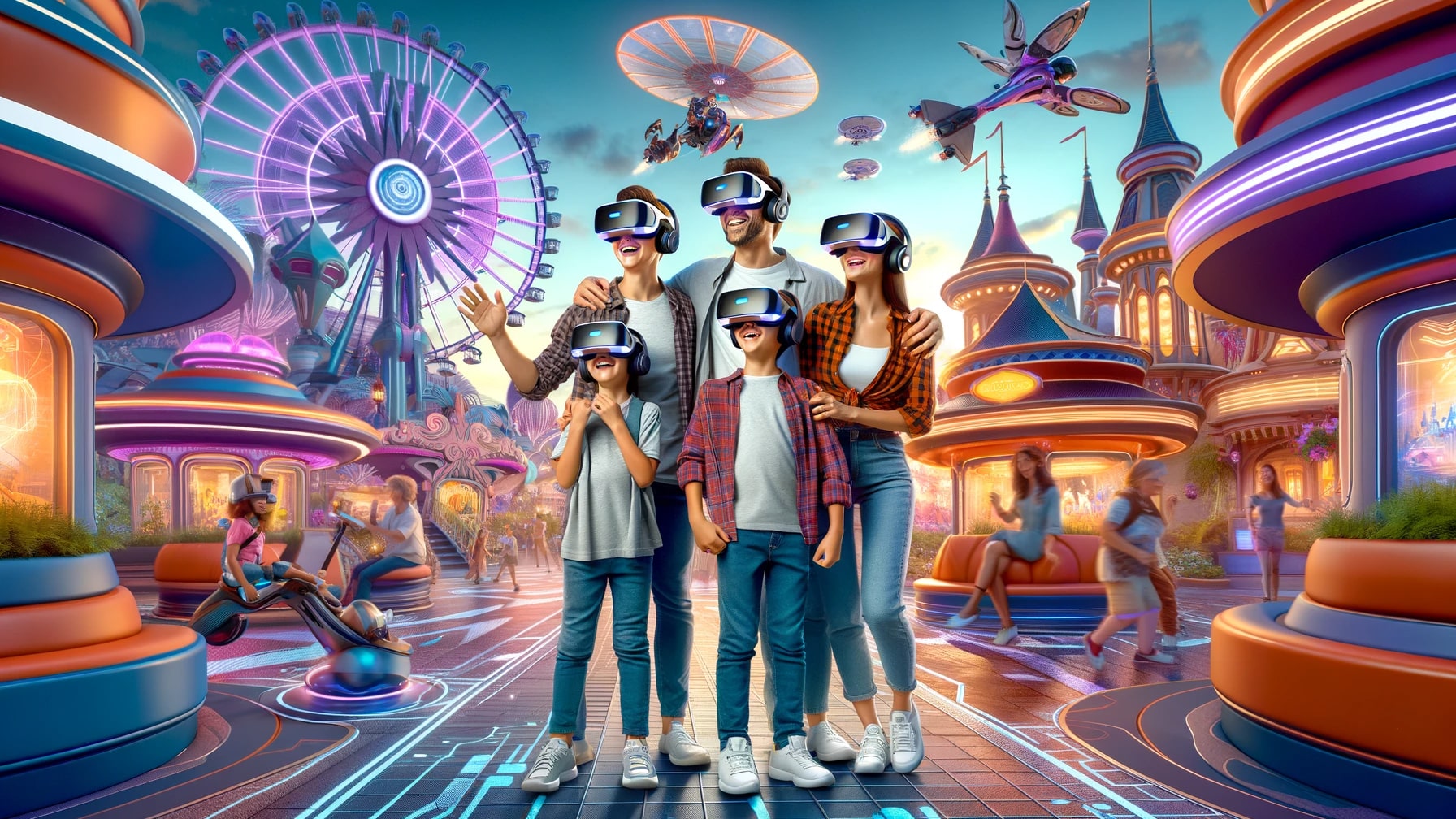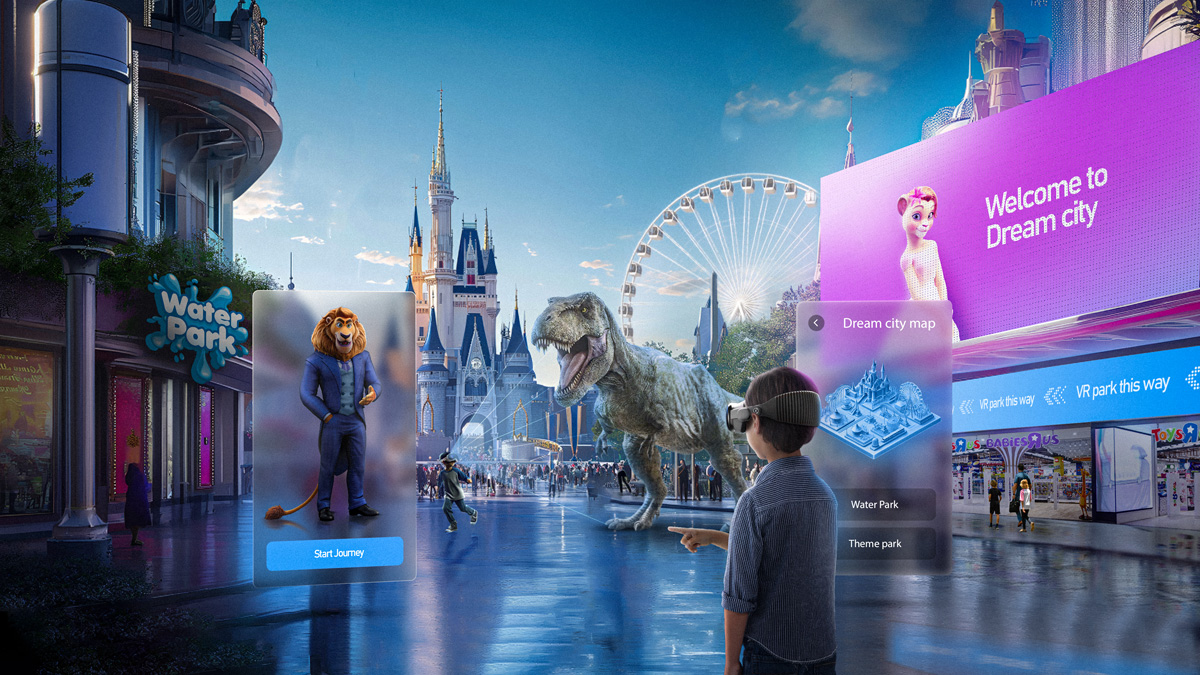
This article focuses on theme park marketing and branding strategies, which differ slightly from those used in other industries.
This article explores both on-site and off-site methods, providing a comprehensive overview of effective strategies and common pitfalls.
Additionally, a case study will illustrate how these techniques can be effectively employed to achieve marketing and branding objectives.
Let’s start with discussing the ways that are proven to be helpful inside the theme park.
5 On-site Marketing and Branding Ideas for Theme Parks
‘On-site’ refers to marketing activities conducted within the theme park aimed at enhancing visitor experiences. You will have various choices regarding what you can do inside the theme park to achieve marketing and branding objectives. The following ideas describe some of the most effective approaches.
Leverage Interactive Displays
Interactive media in marketing is rapidly on the rise, with interactive displays being among the most influential examples of this trend.
The theme park industry is experiencing rapid growth, with an expected CAGR of 5.1% from 2024 to 2030. This growth is driven by technological innovations, including virtual reality (VR) and augmented reality (AR) experiences that enhance visitor engagement and streamline operations.
Parks like Universal Studios and LEGOLAND use digital tools such as Virtual Line technology and interactive apps to improve visitor experiences by reducing wait times and personalizing services. Additionally, immersive experiences extend to areas like art exhibitions, historical recreations, and brand-themed attractions, broadening the appeal and engaging diverse audiences (Peek Pro; Roller; Blooloop).
A wise and well-thought-out strategy for deploying these displays in corners can help theme parks grab visitors’ attention and convey different marketing messages.
Visitors come to theme parks seeking entertainment, and these displays can create engaging experiences when implemented effectively.
During peak times, interactive displays offer simple, engaging games to entertain visitors as they wait.
Furthermore, these displays can be used to suggest recommendations to visitors. Your brand mascot can lead the consultation, or AI digital humans can suggest customized ways for them to enjoy the park.

That is not all. Interactive screens are valuable tools for achieving direct marketing and branding objectives. They can showcase the merchandise available for sale, run promotional targeted campaigns based on each visitor’s demographic data and preferences, and increase brand awareness.
In addition, you can encourage visitors who interact with these displays to share their moments on social media with your branded hashtag, which will attract more attention. Almost all marketers agreed that this kind of UGC is awesome.
It is crucial to collect valuable data and insights from these interactions. The more you understand visitors’ behaviors and preferences, the better informed your decisions will be for future campaigns and potential additions to your park’s offerings.
Provide XR Experiences
The new generation demands fresh adventures. Decades ago, a medium-sized carousel would have been enough to attract attention to a theme park, especially if it was larger than the competition’s.
However, in the current era, carousels can no longer achieve this, as they are considered old-fashioned and do not generate the same excitement as they once did.
That is why we emphasize providing visitors with new experiences. As you are aware, XR experiences, including VR headsets and AR applications, are among the latest trends in the technology and entertainment industries. Hence, they can serve your theme park very well.
Integrating XR experiences (or a combination of AR and VR) into the theme park is possible in several ways. Visitors can use phones to interact with AR subjects or wear VR headsets to immerse themselves in a virtual environment.
Also, Your brand mascot can serve as a tour guide, assisting visitors in navigating the park.
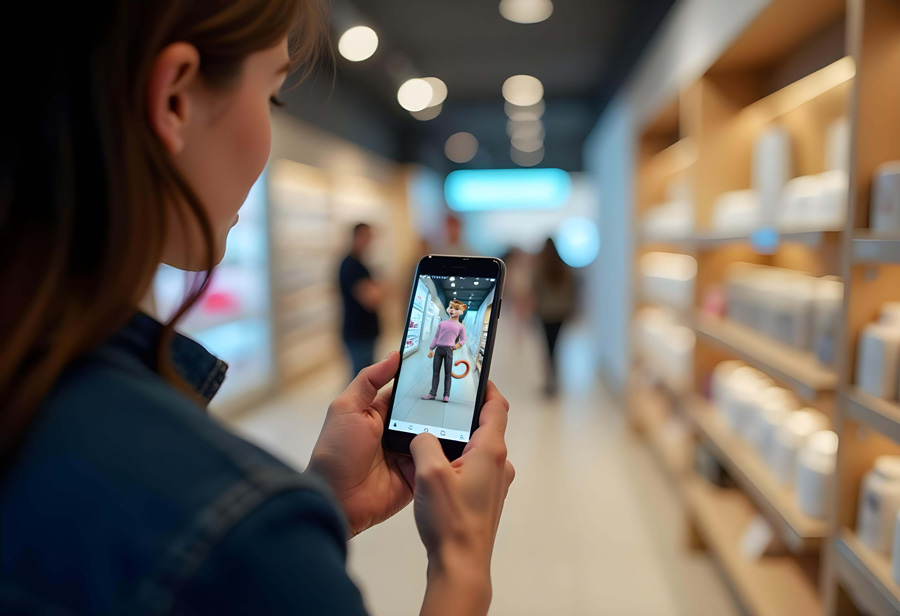
You can also add AR possibilities to the theme park’s mobile application. In this case, virtual elements will pop up when visitors use their smartphones’ cameras, each suitable for a specific reason.
Additionally, it is possible to create specific games with VR headsets. Give headsets to enthusiastic attendees to play special games. This ensures that not only VR headset owners can immerse themselves in XR experiences, but all visitors can enjoy them through the equipment you provide.
This approach can increase engagement, which is crucial for creating memorable moments in the park. Naturally, achieving this goal will help the theme park thrive in its marketing efforts and build lasting relationships with visitors, increasing the possibility of them returning for more. In other words, increasing engagement will result in turning more regular clients into faithful visitors who are categorized as loyal customers.
Moreover, investing in XR technology can distinguish your brand from competitors.
Host Occasional Events with Contests and Prizes
Organizing special events at key times can significantly benefit your theme park. For example, Christmas is a great time to host events.
Decorating the park with New Year and Santa themes, if consistent with your branding, offers a great opportunity to host events and attract more visitors.
Do not limit your imagination to Christmas. Other calendar occasions, such as the Chinese New Year and significant holidays for Muslims and Jews, are also excellent opportunities.
Event marketing should extend beyond peak holidays to include off-peak promotions that drive consistent attendance throughout the year.
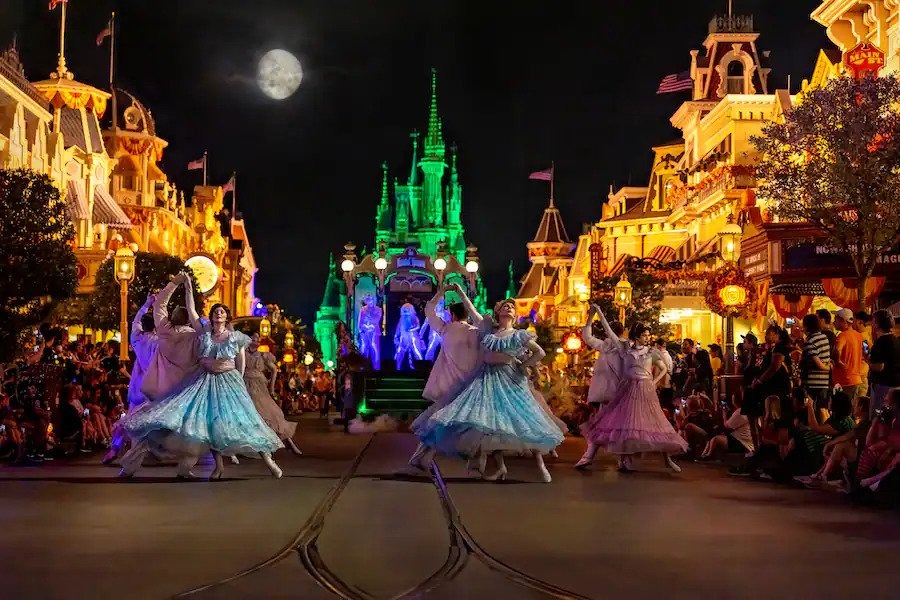
The miracle that turns heads toward occasional events is games with prizes. Friendly competitions offering prizes foster engagement and create memorable experiences for visitors.
Contests will increase visitor engagement and encourage participation in your event programs. They are likely to share their time with their followers on social media platforms and inform more people of the event you host at the theme park. Many first-time visitors are likely to return, and some may become loyal customers over time.
Contests such as best theme dresses, talent shows, standup comedies, photo competitions, etc., are all useful for achieving marketing and branding purposes.
Hosting special events showcases your theme park as a business that aligns with visitors’ values and traditions. Aim to provide an unforgettable experience that attendees will talk about for years to come.
Design Merchandise to Sell With the Park’s Logo and Mascot
Theme parks have the opportunity to design merchandise with their logo and mascot to generate additional passive income.
Typically, people who come to spend quality time in the park, especially those who have children as their companions, want to buy something as a remembrance.
Therefore, if feasible, create toys for this purpose. In addition to playthings, shirts, mugs, posters, stationery, and more can serve this purpose. The critical point is that you should follow the branding principles and guidelines while designing the merchandise since everything must align with the park’s theme. So, ensure visual consistency across all goods available to the public for sale.

Furthermore, incorporating the brand’s story into your products can make them more impactful.
Another important consideration is your target audiences’ and visitors’ preferences. To reach the theme park marketing objectives, you must invest in products visitors will likely spend money on.
Moreover, it is advised to offer visitors various choices. This will increase the chance of selling more items and earning more additional income.
Remember that the goods you are going to sell are monuments; hence, they must be memorable by nature, and it would be great if they had real-life use cases, too.
Aim for unique designs and create one-of-a-kind goods. Limited editions and seasonal offerings would be great ways to capture more attention.
Additionally, the parks can merchandise their brand mascot.
Guide Visitors with a Captivating Story and Gamification
Immersing visitors in an engaging story from start to finish is a powerful indirect marketing.
It has been a while since businesses understood the value of storytelling in bonding with their target audience. Theme parks can also benefit from creating a fantasy world where users travel and explore diverse parts of the park story world.
Stories should be designed to entice visitors to purchase additional tickets, as they will be eager to discover the ending. This way, you will see a sharp rise in sales numbers.
Remember to leverage Gamification mechanisms to create a truly gamified experience. Hide each level key in the previous levels and games; completing them will reward players with requirements for proceeding in the story’s world. Creating a leaderboard accessible through the park’s app and displayed on screens throughout the park would enhance the experience. The ranking will develop a sense of competition, and as said earlier in this blog, people love to compete with others.
Personalized stories may offer varied levels and games to each group, but the scores will be the metric for rating them on the leaderboard.
Offer significant prizes for those who complete their story and provide rewards for those who do not finish as well. Determine each level exit a prize, which naturally, should be less valuable than the final stage reward.
These six on-site marketing and branding ideas are practical, but as a theme park manager, you should also consider exploring external channels to further enhance your strategy.
8 Off-site Marketing and Branding Ideas for Theme parks
Inside the park, you are dealing with visitors who are already familiar with your offerings. Therefore, marketing on-site is more about satisfying attendees and planning to increase loyalty.
However, off-site marketing and external channels are crucial for capturing broader attention and attracting more visitors to the park.
In this section, we will examine eight practical approaches and ideas for your theme park’s marketing and branding plans.
Leverage Transmedia Storytelling
Tell the theme park story in urban advertising to evoke excitement. Then another part of the story can be promoted on social media to engage visitors and encourage them to participate in the experience.
It’s important not to reveal everything all at once. Instead, aim to pique the audience’s curiosity, leaving them wanting more and eager to visit the park to experience your brand’s interactive storytelling.
An story with many shocking twists that genuinely engage audiences will go a long way toward attracting more people to the park. Afterward, you can leverage techniques discussed in the previous section of the blog to keep them involved and encourage them to spend more time at the park.
In addition to urban advertising, other off-site marketing channels can be utilized to reveal a short part of the story. For example, in digital marketing channels, you can provide ways for viewers to interact with your story in the interactive banner and show them unbelievable facts through a static social media ad related to the theme park branding guidelines and the main story.
This way, they will be encouraged to visit the park and learn about the story your brand wants to narrate for them through games and other elements inside the park.
Use the Brand’s Mascot Strategically
As you know, brands’ mascots are versatile business representatives serving multiple purposes. In the fields of marketing and branding, they have proven to be particularly beneficial. So, when you’re brainstorming a theme park marketing strategy, keep in mind the significant advantages of strategically using the park’s mascot. It is a move that can bring considerable benefits.
Of course, brand mascots should be visible inside the park and also on advertising, website, social media, and at every touch point. However, their effectiveness in off-site channels is also undeniable.
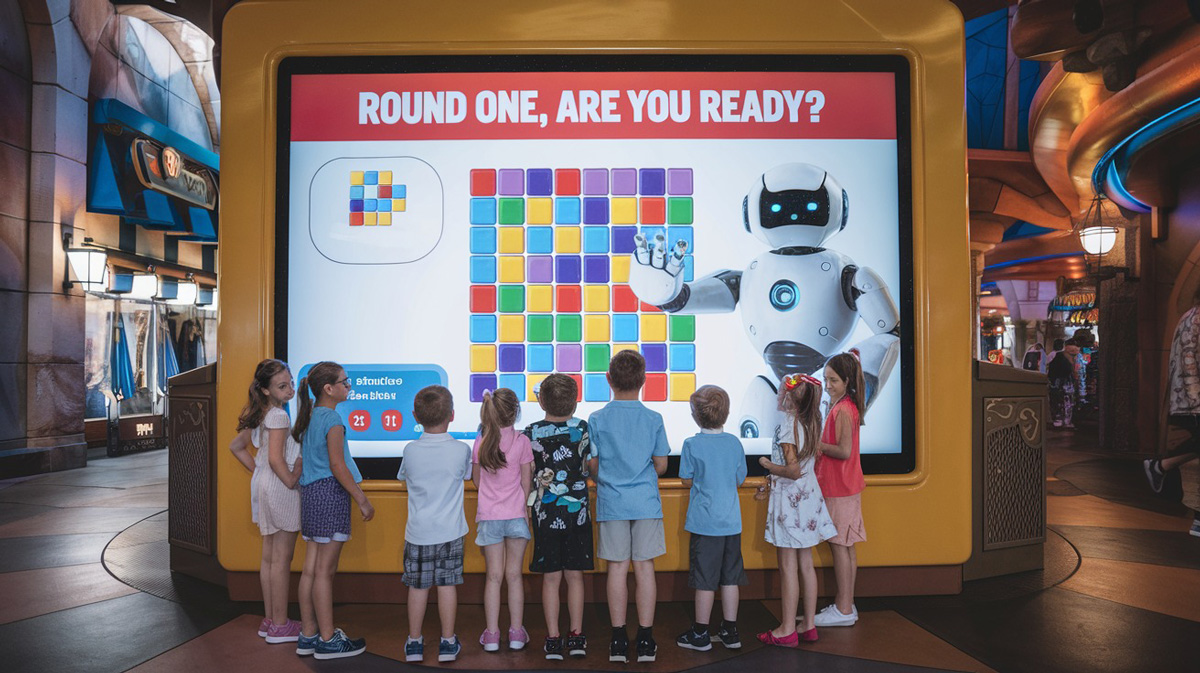
Also, suppose you plan to partner with other brands and run social media campaigns by advertising the park on pages with numerous followers. In that case, the brand mascot can serve as the brand’s ambassador.
Beyond social media marketing and branding, the park’s mascot can be helpful in many more marketing and branding efforts. The PR department can use these representatives for public announcements and media appearances. Meanwhile, they can be printed on merchandise you wish to sell in the park, which we discussed earlier, as an extra income for the park.
In essence, the role of mascots in marketing is indispensable nowadays, and the same is true for theme parks.
If your team needs help creating a brand mascot, you can contact us to delegate the job to our experts.
Partner with Influencers
There are several influencers focused solely on theme parks, and they are an excellent match for your brand to partner with.
Like any other business, theme parks can leverage influencer marketing. The key is to identify the most suitable influencers. Start by creating a list of influencers whose follower base aligns with your target audience. This is the critical first step in launching a successful influencer marketing campaign.
Set clear guidelines according to your brand’s principles for influencers, but let them be creative and make content in their own way. It must be natural to appeal to their followers, so any kind of content conveying a sense of advertising will result in a total failure.
Invite them to the park and provide them with VIP access to all games and sections of the park; let them explore your offerings without any limitations.
Since these people influence a group of people, you can plan to co-host contests with them, aiming to attract their follower base to the park and setting the path for them to become loyal visitors to your theme park.
Different influencers have different strategies for their content creation, so you must brainstorm with them to find the best way to capture attention toward your theme park.
For example, the Theme Park Worldwide channel on YouTube is famous for its in-depth reviews of theme parks. As a result, videos on this channel are usually longer and more than an hour. On the other hand, another channel, the Theme Park Review, offers a broader variety of content in addition to detailed reviews.
Naturally, to make the best of partnering with influencers, you should study their characteristics to provide the necessities they need in order to excite their followers and encourage them to give your park a visit.
To name some ideas for content creation in influencer marketing campaigns, we can mention behind-the-scene tours, new attractions and item reviews, seasonal events, and contests, focusing on family-friendly experiences or any other environment the theme park thrives to create for its ideal customer base, etc.
Use Social Media to Increase Brand Awareness
People spend a noteworthy amount of time on various social media platforms, and your target audience is no exception. Hence, it is wise to plan strategic approaches to benefit from these platforms for the good of your business.
Invest in shorter content, as people are usually less focused when they are exploring Instagram and TikTok. Utilizing countdown timers to create excitement and anticipation has been proven to be a powerful method for drawing attention to your account and increasing your brand awareness.
Post pictures of diverse groups of visitors enjoying their time in your park. This way, you can showcase the theme park’s attractions while also conveying a positive vibe about happiness people can experience while hanging out in your park. Legoland opted for this approach and has been posting such content regularly for a while.
Disneyland, another renowned theme park, creates content with Disney characters scattered across different branches from time to time. If you have some iconic characters as well, you can do the same with a bit of innovation to make something exclusive for your online presence.
In the previous section, we discussed the power of influencer marketing and its notable impact. Social media platforms are where you can demonstrate your partnership with famous influencers people love and adore.
Invite celebrities to your park. Review Ferarri World Yas Island’s Instagram page as a case study in this regard. You can see posts of well-known celebrities visiting their park and acting as their brand ambassador. Surprisingly, many people want to spend time in places famous people have visited before.
Lastly, use your social media accounts to announce hosting concerts, special contests, seasonal events, etc.
Invest in Digital Marketing
Digital marketing is akin to a vast tree with multiple branches. Each branch has its own rules and criteria, which, if obeyed correctly, can cater to theme park marketing needs.
Besides social media and influencer marketing, other digital channels can also serve the theme park marketing goals.
SEO, short for Search Engine Optimization, is an excellent approach to making your brand more known. Aiming for top positions in Google search ranking with specific, related keywords helps achieve various marketing goals. For example, generic keywords, like ‘kids theme park,’ can increase brand awareness.
Longer ones, on the other hand, known as long-tail keywords, have fewer searches but are more to the point.
Assume someone searches the term “theme park that is decorated like the Harry Potter world.” Naturally, if your theme park features Hogwarts towers, it will be attractive to those who search for this term in search engines like Google.
Moreover, investing in PPC advertising is a practical technique for capturing your target audiences’ attention. Speaking of theme parks, this method offers multiple benefits. If implemented correctly, PPC advertising will increase brand awareness and make your brand the talk of the town. In addition to that, you can plan to nurture leads and afterward, if you set the path properly, turn those leads into paying customers who bring profit to your business.
Geo-targeted advertising is rising rapidly in the current marketing era, according to its numerous advantages. PPC is a part of this system, allowing you to target ads precisely to your intended audience.
To run a successful PPC advertising campaign, creating a well-designed and strategic landing page is the first step. By doing so, you will be able to guide visitors who click on your ad, encouraging them to visit the park.
Video marketing is a force to be reckoned with, as more and more people are drawn to this engaging content format each day. Do not overlook its potential to captivate your audience.
Hence, spending time on video creation is strongly recommended. You can leverage those videos for advertising, the park’s YouTube channel, and other social media platforms.
Plan for Offline Advertising
In the current era, when digital channels are rising rapidly, offline advertising still has several compelling use cases. These channels are still worth the investment and can have a significant ROI.
Urban advertising, such as big and small billboards in crowded places like downtowns and even on main roads, is superb at increasing brand awareness.
Print advertising, with its presence in widely-read magazines and newspapers, remains a potent force in the branding and marketing of theme parks, reaching a vast global audience.
Distributing brochures introducing the theme park and games all over the city is another way to generate a buzz and make your business the talk of the town, which is also considered print advertising.
Another practical offline approach is guerilla marketing, which allows you to unleash creativity and think of innovative ways to draw attention to the park. Elements like interactive displays are powerful tools for this purpose.
Please note that the primary trait of successful guerilla marketing is creating a state of shock for the target audience. Therefore, they should be placed in unexpected locations for maximum impact.
Develop NFTs With Benefits
Blockchain technology offers numerous benefits to theme parks, and one of its most significant achievements is NFTs. These unique digital assets can generate capital for future investments, but their real power lies in their potential to enhance theme park branding and marketing.
NFT is short for non-fungible token. Although these modern-day assets can have several use cases, their most common functionality is that they can be utilized as digital collectibles. Since they are recorded on blockchains, their uniqueness is guaranteed.
Therefore, you can create NFTs for your theme park mascots or branded items and release them to the public for sale, with a predetermined price for each.
People are more likely to be interested in digital art if it has an exciting story behind it.
Creating a sense of urgency can also prompt your target audience to act immediately and purchase the theme park’s NFTs. For instance, you can highlight that the 100 NFTs you are selling next week will be a limited edition, and those who buy them will have access to special offerings at future events.
So, tangible benefits must be considered for those customers who value your NFT offerings. You can provide them early access to new attractions, events, merchandise, and games added to the theme park.
Other ways to prove to them that those NFTs they bought earlier were worth the pay are to grant VIP access backstage while hosting a famous singer’s concert or offer them the best seats every time.
Additionally, pairing NFTs with physical collectibles can enhance their appeal.
The more benefits and advantages you offer NFT holders, the more demand for buying them will increase, resulting in high prices for each NFT. Since many people presume these digital assets are investments (just like how they perceive cryptocurrency), increases in value will satisfy them and even attract more attention to the park’s digital collectibles.
Host Virtual Tours on the Theme Park Website
The masses favor these kinds of tours because they offer excellent opportunities to explore distant locations with a smartphone, laptop, or PC.
Interestingly, virtual tours can be used to achieve theme park marketing goals. Setting the interactive infrastructure on the park’s website allows people to hang around in the park from their homes and workspaces to finalize their decision upon visiting the place or not.
If you have ever used the Street View feature in Google Maps, you know how these virtual tours operate. It is exactly the same. Usually, you will start the tour at the front gate and can go in different directions during your virtual visit. The 360-degree view lets users have a full view of everywhere in the park and find out if they like to visit the park in their spare time.
Here, we reach the end of the theme park’s marketing and branding ideas outside the park.
Up to this point, we have discussed approaches that will aid theme park managers in promoting their respective brands through various channels. Now, it is time to examine a case study done by Dream Farm Agency.
Reviewing a Successful Case Study
Located in the beautiful city of Antalya, Turkiye, The Land of the Legends is a luxury-level theme park owned by Rixos.
Dream Farm Agency had the honor of collaborating with the esteemed theme park managers to create three unique mascots for the park, each with its own distinct features and charm.
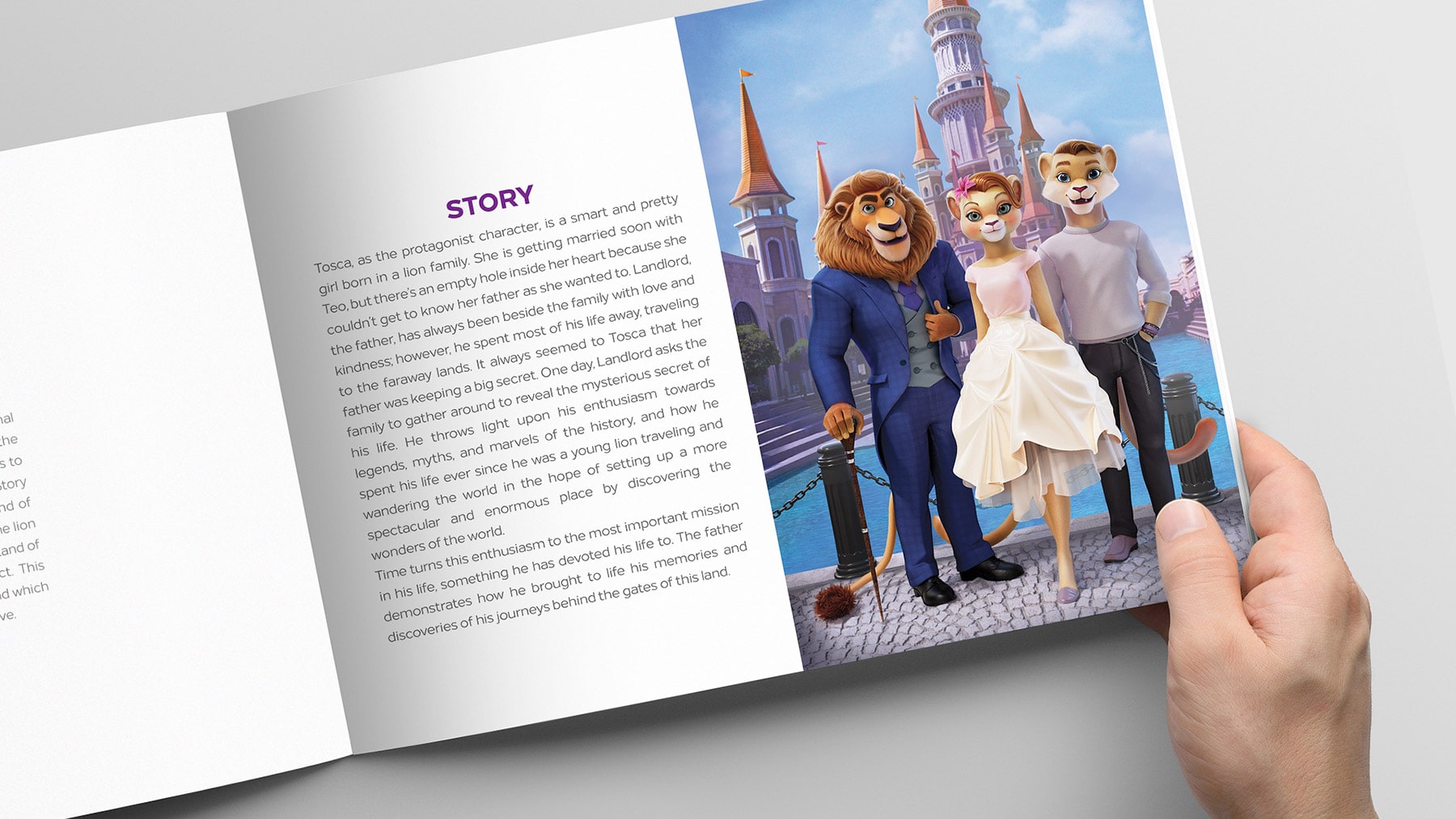
Long story short: the outcome was impressive. The noble-dressed lions have become iconic representatives of the entertainment center, ensuring that wherever people encounter them, they instantly recall The Land of the Legends.
Read more about The Land of the Legends case study.
Dream Farm Experts Will Develop and Implement Your Strategy and Ideas
If your park needs expert assistance in marketing and branding, our team is here to help. At Dream Farm Agency, our team includes experts who can develop outstanding strategies for theme parks and work with your crew to implement them flawlessly.
This will result in successful marketing and branding efforts to make your park famous and a favorite entertainment site.
You can also benefit from choosing our services for your business. Contact us for more information about our services in this regard.
Nikan

